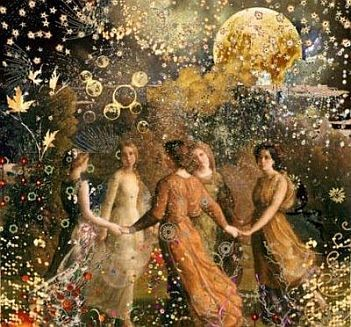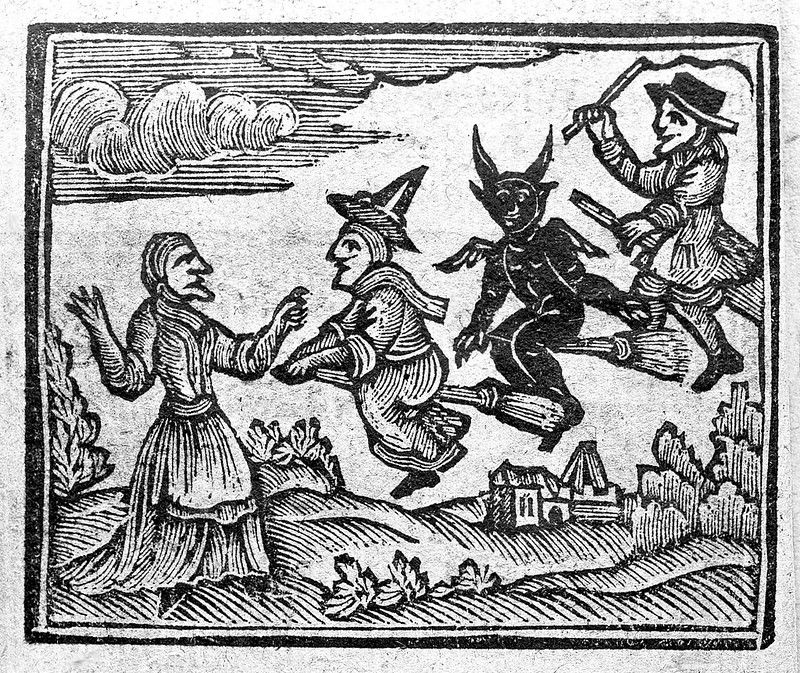
She was a Christian martyr, beheaded at the orders of the Roman emperor Diocletian, on January 21st, 304 AD. She is the patron saint of girls, virgins, gardeners, and victims of sexual abuse. Her legend includes many supernatural occurrences, and Agnes was one of the most popular saints in 18th and 19th century England.
Agnes of Rome was said to have supernatural powers. These included the ability to make hair grow at a rapid level, the ability to strike men blind, and even the ability to raise the dead. Her Feast Day falls on January 21st, and on its eve, January 20th, it is said that young single ladies may be given dreams of their future husbands by Saint Agnes. But only if they follow certain rituals. Some of these rituals are quite bizarre and involved—more about them later!
But first, who was Agnes of Rome and how did she acquire such patronage?
SILVER SPOONS
Born in Rome, in the year 291 AD, Agnes was the daughter of a wealthy nobleman. She was very beautiful, and very rich. Before her lay a life of extreme privilege. This was both a blessing and a curse, since it ensured, for better or for worse, that many young suitors wanted to make her a bride.

When Agnes was only thirteen years old, the guys came a’ courting. Agnes, however, was a devout Christian. And this was a world where Christianity was illegal, condemned by the government, and Christians were regularly fed to the lions by Roman authorities. Agnes vowed to never marry and keep her virginity. This was a most dangerous decision, indeed. (At the tender age of thirteen, the girl was probably terrified, and rightly so!)
Needless to say, the local young men were not happy about this. They too, were of noble birth and used to getting what they wanted. No way was Agnes going to get away with this pious behavior!
RAPUNZEL RAPUNZEL…
One of Agnes’ suitors happened to be the son of Sempronius, an important Roman prefect. When Agnes refused to marry him, the son got mad and convinced his father to arrest her for being a Christian. For her punishment, Sempronius came up with the most humiliating thing imaginable. Agnes was to walk through the streets naked, subject to all kinds of taunts and embarrassment, not to mention assaults. The walk would end at a brothel, where Agnes would then be forced to work as a prostitute for the rest of her life.
Agnes was stripped naked and ordered to begin her walk of shame—but her nakedness did not last for long! Agnes’ hair began to grow rapidly, so fast that in no time it was down to her toes, thick and lustrous enough to clothe her entire body. (And you thought Lady Godiva was good?)

MORE MIRACLES
Nonetheless, Agnes was forced to enter the brothel. It is said that men came, with the intent of raping her, but upon seeing that she was such a pure and beautiful girl, many could not bring themselves to defile her. The ones that did dare attempt it were instantly struck blind!

The son of Sempronius, eager to get his due, showed up at the brothel with the intention of raping Agnes. But, before he could even get his toga off, the boy was struck, not only blind, but dead! Agnes, however, was not beyond forgiveness. Maybe she realized she had killed the son of a powerful politician and had second thoughts. For whatever reason, Agnes began to pray over the villain. Miraculously, he was restored back to life.
After this spooky and powerful display of Agnes’ supernatural abilities, Sempronius became terrified. He recused himself from the entire matter. But Agnes was still to be given no peace. Other Roman authorities, sent at the command of Emperor Diocletian, came to the brothel and accused Agnes of witchcraft. Her punishment was—you guessed it! To be burned at the stake.
They bound Agnes in ropes and tied her to the woodpile. But when they lit the pyre, there was a problem. Apparently, the stakes would not burn, and neither would Agnes!

The Roman authorities were really fed up by now. They ordered one of their guards to behead Agnes and finally put an end to her. And so it was, she died.
Or did she?
Agnes’ parents, being rich noble people, had her buried in a well sealed tomb. According to the legend, eight days later Agnes’ parents went to visit her gravesite. There they encountered a chorus of angels, and Agnes herself, standing outside the tomb. There was also a white lamb by her side.

SILENCE OF THE LAMBS
The lamb, a symbol of purity, is one of the icons still associated with Saint Agnes. She has traditionally been depicted as a young girl with long hair, holding a lamb. The word ‘agnus’ in Latin means ‘lamb’.
The Vatican has even gotten involved with an homage to Saint Agnes!
Ever since the 16th century, the Vatican has performed a ritual of the Blessing of the Lambs on Saint Agnes’ feast day. On this day two lambs are brought from the Trappist abbey of Tre Fontane in Rome and are blessed by the Pope. The following summer, the lambs are shorn, and their wool is used to weave sacred garments called pallia. On the 29th of June, which is the feast of Saints Peter and Paul, the Pope gives these pallia to the newly appointed archbishops.
ALL THE SINGLE LADIES!

Now back to Saint Agnes Eve, as all the single ladies await their dreamy husbands… Be assured that Saint Agnes may send you visions of your future man! But only if you follow certain rituals, which are as follows:
- You must fast on this evening, and go to bed with no supper.
- Take one sprig of rosemary, and one sprig of thyme. Place them in each of your shoes. Put the shoes beneath your bed.
- It also helps to walk up the stairs backwards, if your bedroom is on the second floor.
- Take pins from a pincushion and transfer them to your sleeve while reciting the Lord’s Prayer.
- Then, remove all your clothing, and lie naked on the bed.
- Before you fall asleep, say this prayer:
“Saint Agnes, that’s to lovers kind
Come ease the trouble of my mind.”
Then merely go to sleep, and wait for your dreams. According to some legends, it is said that the man himself will appear in your room, and the two of you will have a great feast (thus making it worth skipping supper!)
For the more adventurous, there is this ritual from Scotland: On Saint Agnes Eve at midnight, girls would gather together in a field.

They would throw grain on the soil, representing growth and fertility. They would then recite this prayer:
“Agnes sweet and Agnes fair,
Hither, hither, now repair;
Bonny Agnes, let me see
The lad who is to marry me.”
So if you happen to live near a field, and have some friends who are game, this might be a fun ritual to try.
POETRY IN MOTION
Saint Agnes Eve became wildly popular in 18th and 19th century England. John Keats, the famous poet, even dedicated one of his most beloved poems to it, titled “The Eve of Saint Agnes”.

“They told her how, upon St. Agnes’ Eve,
Young virgins might have visions of delight,
And soft adorings from their loves receive
Upon the honey’d middle of the night,
If ceremonies due they did aright;

As, supperless to bed they must retire,
And couch supine their beauties, lily white;
Nor look behind, nor sideways, but require
Of Heaven with upward eyes for all that they desire.”
The entire poem can be read here: https://www.poetryfoundation.org/poems/44470/the-eve-of-st-agnes
Have a beautiful and blessed feast of Saint Agnes.



















































